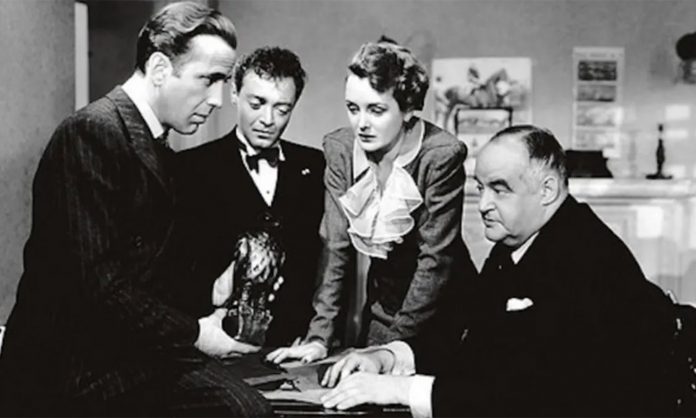In a post on DIY MFA, Amber Royer offers advice for using your MacGuffin to its best advantage. In short, the MacGuffin is something everyone wants or something your characters must interact with. Not quite interchangeable, the MacGuffin is nonetheless not an element of primary importance to your novel. Rather, it’s an object, device, or event that you use to organize your story. The Maltese Falcon is a famous MacGuffin – Dashiell Hammett could have used any object to frame his story, but decided that the statue would be what everyone in his novel pursued. The object itself isn’t the story; the pursuit and the lengths to which the characters will go to obtain it, is.
“Some MacGuffins work better than others,” Royer says. “Choose ones that will deepen your story, making it resonate in some way.” Royer recommends using your MacGuffins to:
- Support Your Theme. “When you choose the MacGuffin that will draw readers into your story, think about it as a symbol,” Royer says. “What does it stand for, outside of the reason the characters are fighting over it? How does it tie to what you want readers to remember about your book?”
- Connect to Specific Characters. In Star Wars, the MacGuffin is R2D2. Everyone wants to find or protect the droid, who hides the plans to the Deathstar, the object that’s really important to the plot. However, R2D2 is also the first of Luke Skywalker’s new family, which fulfills his need for connection after the murder of his aunt and uncle. Your MacGuffin doesn’t have to be connected to your protagonist. Your antagonist or a supporting character can serve this role as well.
- Foreshadow Real Plot Issues. In Casablanca, everyone wants to letters of transport that will allow them to leave Morocco. Though Rick doesn’t know it, by the end of the story he’ll have to make a major decision involving those papers. “The writers could have chosen to introduce money, to be used to bribe the necessary folks to cross borders, or gone in a different direction entirely,” Royer writes. “But it wouldn’t have tied things together nearly as neatly.”
- Capture the Reader’s Imagination. “If your book has a MacGuffin that intrigues the reader just by what it is—a list that puts secret agents in jeopardy, a ring that corrupts whoever holds it, a priceless statue that will make whoever ends up with it rich—then that makes each character’s motivations clear, allowing the reader to follow along emotionally in the resulting tug-of-war,” Royer says.
- Ease of Understanding. Your MacGuffin will be less effective if your readers don’t know what it represents or why your characters value it. “When you work a MacGuffin into your story, give a visceral meaning to it—money, love, power—so that readers won’t have to guess why everyone wants it,” Royer writes.












